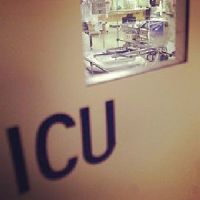The challenges of addressing ICU-acquired weakness with a mobility programme are the focus of a recent article in Clinics in Chest Medicine. While the cause of ICU-acquired weakness is known and physical therapy and mobility during acute illness is a proven intervention that is not prohibitively expensive implementation in ICUs lags behind. Authors Shyoko Honiden, MD, Assistant Professor of Medicine (Pulmonary), Yale School of Medicine and Geoffrey R Connors, MD, Assistant Professor of Medicine (Pulmonary) and Associate Program Director, Internal Medicine Traditional Residency Program asked: why are early mobility programs not up and running in all medical and surgical ICUs in this country? What are the barriers to implementing an early mobility program? How can the barriers be overcome?
Honiden and Connors explain that changing beliefs and understandings means addressing knowledge gaps and real or perceived concerns surrounding the action to be implemented. This “provides a tangible, defined, and finite set of targets at which the efforts could be directed … the goal is not to change culture but rather to establish an environment and an understanding in which the intervention to be adopted becomes a daily reality.”
Their article recommends the Lean continuous quality improvement method (CQI), which includes the principles of minimising waste and increasing value while creating a culture of CQI.
1. Take inventory of the current state
A survey of user needs will show patient experience and provider perceptions. A baseline survey can highlight areas of waste (e.g. longer stay in the ICU), overburden (e.g. asking nonspecialised staff to perform specialised activities) and inconsistency (e.g. missed activity orders), and thus raise awareness about strategic issues that ICU directors need to address.
2. Preplan
Simulate various scenarios and create a mobility screening tool with key stakeholders.
3. Plan for change at leadership level
The authors recommend that a team implementing change should ideally have representatives who are leaders at a systems level, leaders with expert power and with technical expertise, and day–to-day leadership to coach, motivate, and problem solve. The leadership team needs to plan how the change initiative will be benchmarked, evaluated, and measured; how progress will be demonstrated to stakeholders and identify opportunities for scholarship and research to increase visibility.
The authors include a step-by-step guide to project launch covering prework, creating a climate for change, engage and enabling the whole organisation, and implementing and sustaining change.
Image source: freeimages.com
Honiden and Connors explain that changing beliefs and understandings means addressing knowledge gaps and real or perceived concerns surrounding the action to be implemented. This “provides a tangible, defined, and finite set of targets at which the efforts could be directed … the goal is not to change culture but rather to establish an environment and an understanding in which the intervention to be adopted becomes a daily reality.”
Their article recommends the Lean continuous quality improvement method (CQI), which includes the principles of minimising waste and increasing value while creating a culture of CQI.
Steps to implement a mobility programme in a ICU
1. Take inventory of the current state
A survey of user needs will show patient experience and provider perceptions. A baseline survey can highlight areas of waste (e.g. longer stay in the ICU), overburden (e.g. asking nonspecialised staff to perform specialised activities) and inconsistency (e.g. missed activity orders), and thus raise awareness about strategic issues that ICU directors need to address.
2. Preplan
Simulate various scenarios and create a mobility screening tool with key stakeholders.
3. Plan for change at leadership level
The authors recommend that a team implementing change should ideally have representatives who are leaders at a systems level, leaders with expert power and with technical expertise, and day–to-day leadership to coach, motivate, and problem solve. The leadership team needs to plan how the change initiative will be benchmarked, evaluated, and measured; how progress will be demonstrated to stakeholders and identify opportunities for scholarship and research to increase visibility.
The authors include a step-by-step guide to project launch covering prework, creating a climate for change, engage and enabling the whole organisation, and implementing and sustaining change.
Image source: freeimages.com
References:
Honiden S, Connors GR (2015) Barriers and challenges to the successful implementation of an intensive care unit mobility program: understanding systems and human factors in search for practical solutions. Clin Chest
Med, 36: 431-40.
Latest Articles
ICU, Quality, intensive care, change management, Mobility
The challenges of addressing ICU-acquired weakness with a mobility programme are the focus of a recent article in Clinics in Chest Medicine. While the caus...



























